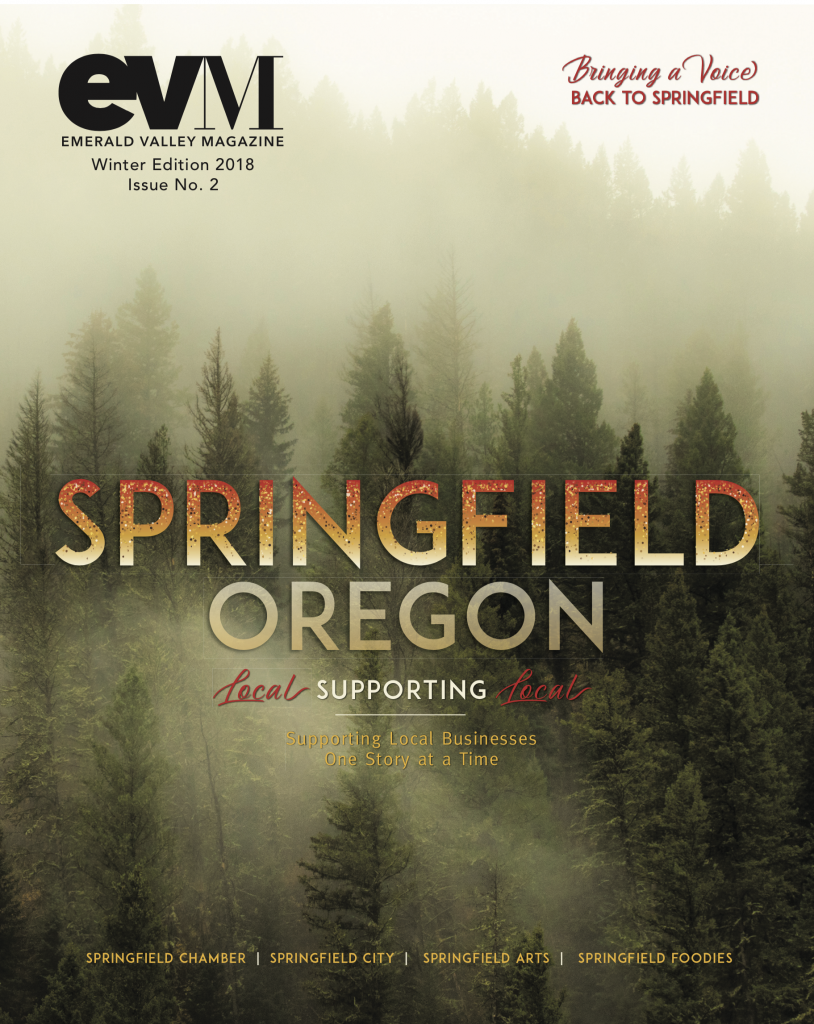Mediums of Relaying Stories
Creating awareness around your product, brand, or business is one of the first things we learn in Marketing 101. However, there are so many mediums available to reach your audience that it’s important to consider what each brings to the table. TV, radio, and print media are three of the major traditional media resources available, and we reached out to our several Chamber members who work in these fields to gain their perspective on how their organization helps relay stories, the ways each medium sparks emotion, and the advantages of each individual method.
By Noel Nash, Emerald Valley Magazine/ Creswell Chronicle

The most important thing, truly above all else, is serving the reader/viewer. People today have an expectation of consuming content wherever and however they want, and on the best-available platform at that time. So, it’s not a question of digital vs. linear TV vs. print publications; they all work hand-in-glove to serve the consumer.
The Creswell Chronicle, which covers the southern Willamette Valley from Cottage Grove to Springfield, focuses on creating unique and differentiating content — and hyper-local news clearly fits that criteria.
Stories in The Chronicle’s weekly paper, on its daily website and in its seasonal magazines have to be compelling, entertaining and utilitarian.
It all comes back to serving the consumer: Big-screen TV, desktop computer, laptop, tablet, smartphone or newspapers and magazines: People want useful information and compelling storytelling that helps them live a better life and engage with their community.
The Chronicle does this in a variety of ways, including: Free listings for community events and gatherings; an emphasis on Legacy coverage (i.e., obituaries), and in-depth storytelling and that matters to family, friends and neighbors.
By Dan O’Brien, KEZI TV Inc.
Your business has a story. Your brand has an identity. And your brand’s story is what resonates with your customers. It’s why they have chosen to seek you out and engage with your product or service. Capturing the essence of your brand, and creating an emotion around that story is what television does best.

In all good stories you need an interesting plot line. Perhaps your plot line is a problem vs a solution (hot weather and cranky kids vs cooler house and happy kids). Perhaps it is good vs evil (customer service that goes beyond expectations vs no customer service at all). Every story needs good characters in the form of founders, employees and customers. And like every good story, you include the “what” and the “who,” but most importantly you must include the “why!” Give the viewer a reason to invest.
Through sight, sound, color and motion a 30-second commercial message creates and emotion, which does an incredible job of relating your brand’s story to an enormous audience. It can relay your look, feel, style and personality. It can give a sense of your company’s values, product details and history, and do it through an emotional connection not found in other media.

By Peter Powell, Eugene Area Radio Stations (EARS)
No other advertising medium lends itself to storytelling better than local radio. Tell listeners about what you’ve got for them and watch the crowds form and your cash register ring.
Jeff Gaulton with KPNW tells the story about a hearing aid company owner who didn’t think his target audience listened to the radio, so he was invited into the studio to tell his story to the listeners. He included his cell phone number for more information. As he walked out of the studio, his phone started to blow-up! He’s a dedicated radio advertiser to this day because radio works.
Reaching over 91% of all Lane County adults every week, your local radio stations each deliver a targeted portion of that audience that precisely matches who you would like to see as customers for your goods and services.
Albertson’s teamed up with radio to promote a Sunday morning meet and greet with Ashton Eaton before he was an Olympian to promote an electrolyte drink. They thought 10 to 15 people in the store would be a success. 45-minutes before the radio remote started, there were 150 to 200 people in the parking lot.
Radio encourages you to use the power of the mind to build a larger-than-life image of how you’d like the listener to respond to your invitation. Some think radio is just about top of mind branding. That’s an element, but it’s also the opportunity to move the bodies and ring the cash register.
Most people will tell you that the last ad they hear on the radio is the place that they go to make a purchase today. Radio tells the story that moves them that last step to make that purchase today.
Discover more from Springfield Bottom Line
Subscribe to get the latest posts sent to your email.






